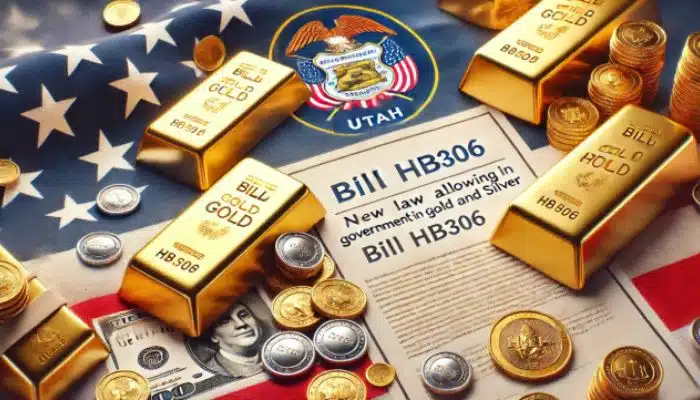In a bold and symbolic shift, the state of Utah has taken a historic step by allowing certain vendors to accept payments in gold and silver. This move, which evokes echoes of the pre-1971 gold standard era, has sparked conversations about whether the United States — or parts of it — might be inching back toward a hard-money system. While this development may excite proponents of sound money and limited government intervention, it also raises questions about feasibility, infrastructure, and whether gold can ever truly reclaim its past role in a modern, fiat-based financial system.
The Gold Standard: A Brief Look Back
To understand the significance of Utah’s decision, it helps to recall what the gold standard represented. Under the classical gold standard, paper money was backed by physical gold. This system offered a sense of monetary stability and limited the ability of governments to inflate currency at will. However, the U.S. officially abandoned the gold standard in 1971 under President Nixon, fully embracing fiat currency — money backed not by a tangible asset, but by government decree and economic trust.
Since then, inflation, economic cycles, and financial crises have led some to argue for a return to a more stable and tangible monetary base. Advocates believe that gold, due to its intrinsic value and limited supply, can curb inflation and prevent reckless fiscal policy. Utah’s policy shift may be interpreted as a nod in that direction.
What Exactly Did Utah Do?
Utah passed legislation that allows the use of gold and silver coins — minted by the U.S. government — as legal tender for state transactions. This includes the possibility for vendors doing business with the state to accept these precious metals as payment. The state has also enabled private depositories and developed systems for converting gold and silver into spendable balances.

Importantly, Utah is not issuing its own gold-backed currency. Rather, it is enabling an infrastructure where gold and silver coins can be used more freely as a medium of exchange, primarily through digital representations backed by physical holdings. It’s not exactly the return of the gold standard — but it’s a noteworthy experiment in currency diversity.
Read More: India Warns Pakistan Against Ceasefire Violations By Pak Army Along LoC In J&Kw
Why Is Utah Doing This?
There are philosophical and economic motivations behind Utah’s move. Many of the state’s lawmakers and citizens adhere to principles of limited government, fiscal responsibility, and skepticism of central banking. These values align closely with the gold standard’s appeal — a system where governments can’t inflate the currency at will or manipulate interest rates for short-term political gain.
Supporters of the policy argue that gold and silver have held value for thousands of years and that reintroducing them into circulation can offer a hedge against inflation, economic instability, or federal fiscal mismanagement. They also suggest that it provides citizens with more financial freedom and control.
Challenges and Realities
Despite the symbolic weight of Utah’s move, practical challenges remain. The modern financial system is deeply entrenched in fiat currency. Most people receive their paychecks in dollars, pay their bills in dollars, and save or invest through fiat-based systems. Transitioning even a portion of the economy to precious metals requires new infrastructure, education, and technological adaptation.
Gold and silver are also not very practical for everyday transactions. Their prices fluctuate, making pricing goods in metals more complex. Additionally, the bulk and divisibility of physical metals make them less convenient than digital currencies or credit cards.
Then there’s the federal government. The U.S. Constitution prohibits states from coining money, and while Utah is not violating this directly, any attempt to supplant the dollar in a serious way could lead to legal or regulatory pushback.
A Trend or a One-Off?
Utah is not entirely alone. States like Texas and Wyoming have taken steps to recognize gold and silver as legal tender or build gold depositories. These actions suggest a small but growing interest in diversifying away from the dollar’s monopoly. However, these remain largely symbolic or optional policies, not wholesale shifts in monetary practice.
For now, Utah’s policy seems less like a revolution and more like a statement — a hedge against uncertainty and an experiment in monetary innovation. While it may not bring back the gold standard in the way some envision, it does serve as a reminder that the debate over sound money and government control of currency is far from over.
Conclusion
Utah decision to pay vendors in gold and silver represents more than just a financial policy; it’s a philosophical stance. While not a full return to the gold standard, it hints at the desire for greater financial independence and skepticism of fiat currency systems. Whether this is the beginning of a broader movement or remains a localized experiment will depend on how other states and the federal government respond — and whether Americans truly want to return to a currency backed by glittering metal rather than promises and trust.










